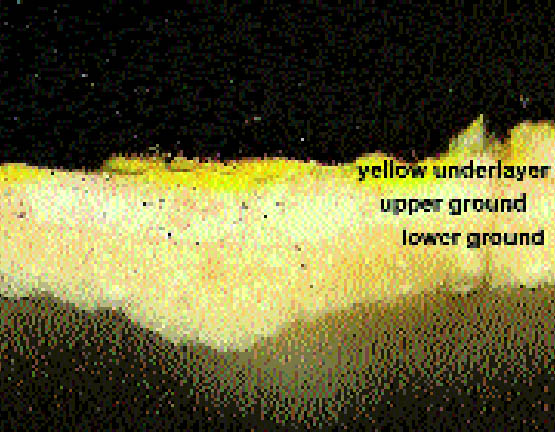THE METHODS AND MATERIALS OF MARTIN JOHNSON HEADEELIZABETH LETO FULTON
5 UNDERLAYERSImprimatura plays an important role in Heade paintings, setting an overall atmospheric tone in outdoor landscapes and seascapes. In some of his work, Heade chose to use an imprimatura selectively or continuously, depending on the effect he wanted to create. One of the more prominent examples can be seen in the eerie atmosphere created in Approaching Storm. In this painting, cross section sampling was performed on all four edges in search of a continuous undertone. It appears that an acid, greenish yellow imprimatura (fig. 6) was present overall, loading the image with a feeling of tension. The predominant yellow pigment analyzed in this painting is lead chromate yellow. In other paintings, such as Hunters Resting (1863, S114), a warm pink imprimatura imparts a restful feeling of comfort in the glow of autumn sunlight as seen by the subjects after a day of hunting outdoors. In April Showers, Heade employed a prominent, dark gray-brown imprimatura (Wright 1999) to create an ominous atmosphere.
|
